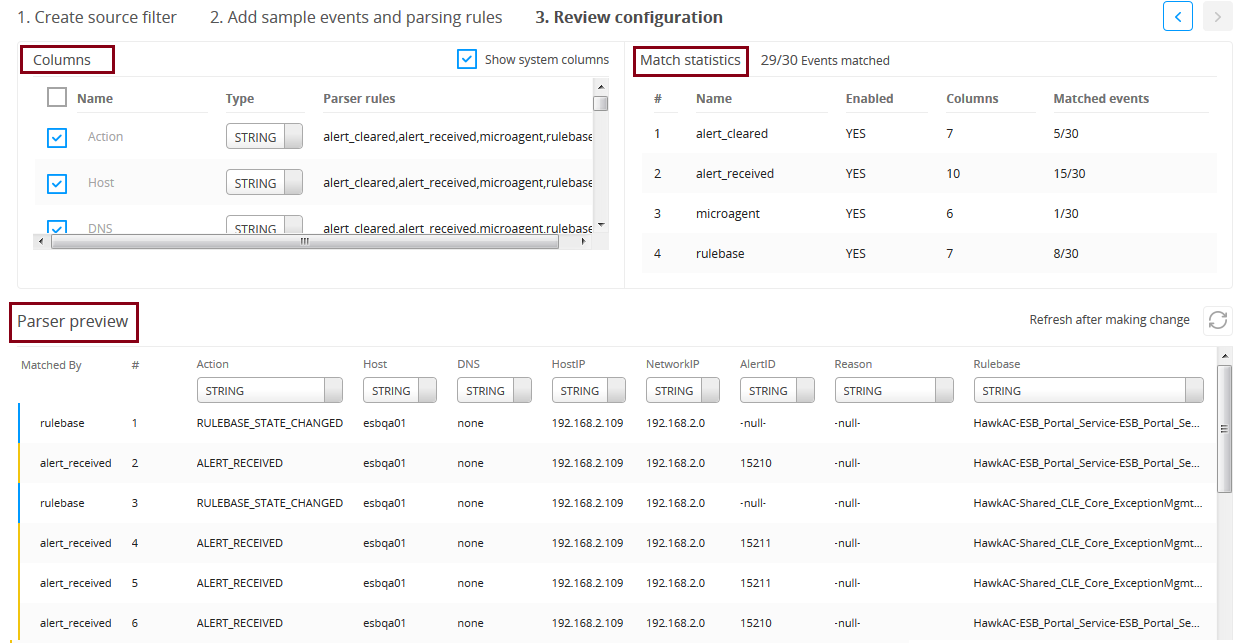Managing Columns
From the Review configuration page, you can update columns and data types for the associated data model.
Procedure
-
In the
Columns panel all system and custom columns are displayed. You can add or remove columns by selecting the check box that is next to the column name. You can update any column name and type.
- Name: The name of the column that is displayed in the results. To add or remove a column, click the check box next to the column name. To update the name of a user-defined column, click the column name.
Note:
- The name can contain the letters of the alphabet, a number, an underscore (_), or a hyphen(-).
- When used in an Advanced Search query or an expression, the name must be enclosed in square brackets ([ ]) in any of the following scenarios:
- A column name cannot include a period (.).
- Two columns cannot have the same name.
- You cannot use reserved keywords as the column name. For a list of reserved keywords, see Reserved Keywords.
- Type: The data type of the column. Click in the column to add or update the supported data types. Select the data type from the list.
- Parser rules: The rule name that includes the defined column.
- Name: The name of the column that is displayed in the results. To add or remove a column, click the check box next to the column name. To update the name of a user-defined column, click the column name.
-
Select the
Show system columns check box to show all system columns.
By default, some system columns are selected. If the check box is not selected, only the user defined columns and some default system columns are displayed. For a list of system columns, see Types of Columns.
-
After modifying column list, click
 to refresh the
Parser preview panel to view all extracted columns and their data types for the defined parsing rule. For custom columns, click in the
Type field to change the supported data type. Select the data type from the list.
to refresh the
Parser preview panel to view all extracted columns and their data types for the defined parsing rule. For custom columns, click in the
Type field to change the supported data type. Select the data type from the list.
-
Click
Save to save the column updates.
The Match statistics panel helps you view an overall information about events that are matched by specified parsing rule. It displays how many rules are enabled, how many columns are extracted by the rule, and how many events are matched with each rule.
Copyright © Cloud Software Group, Inc. All rights reserved.

